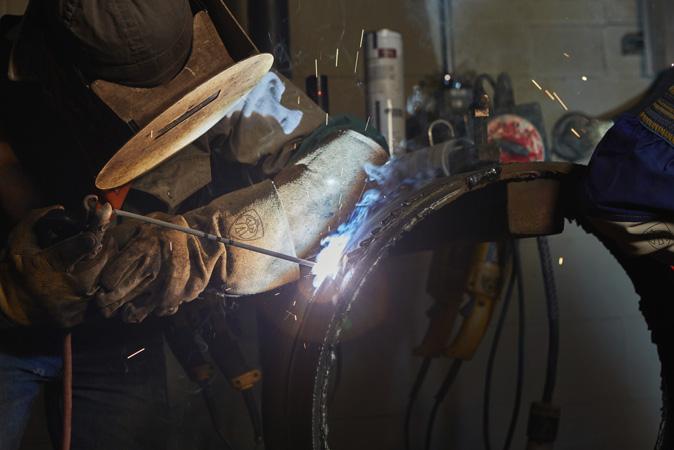
7 minute read
Low hydrogen weld training for pipelines

Figure 1. Lincoln Electric’s customised training takes place at its 130 000 ft2 Welding Technology & Training Cenre in Cleveland, Ohio.
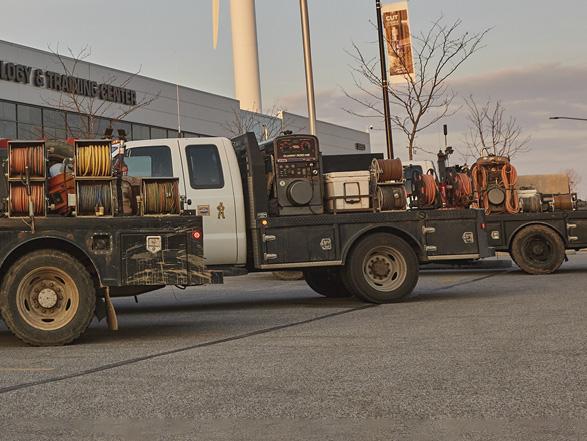
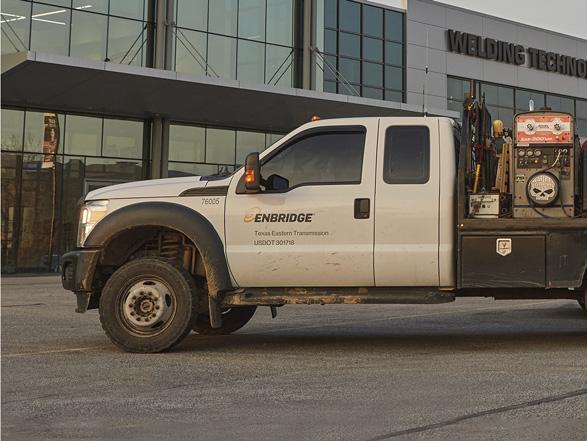
Sam Phillips, Global Industry Segment Director – Pipeline, The Lincoln Electric Company USA, describes how the push for stronger welds sent a pipeline company to Lincoln Electric for new low hydrogen SMAW rod training.
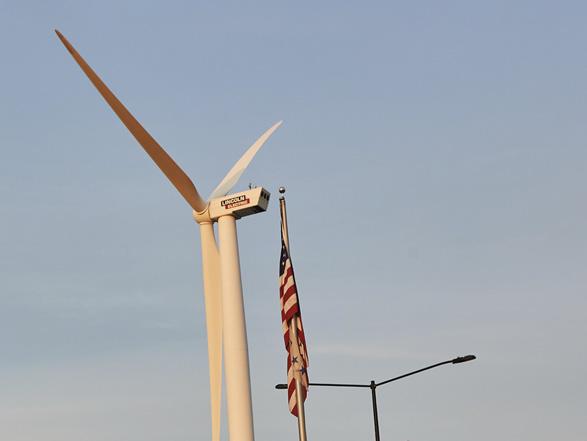
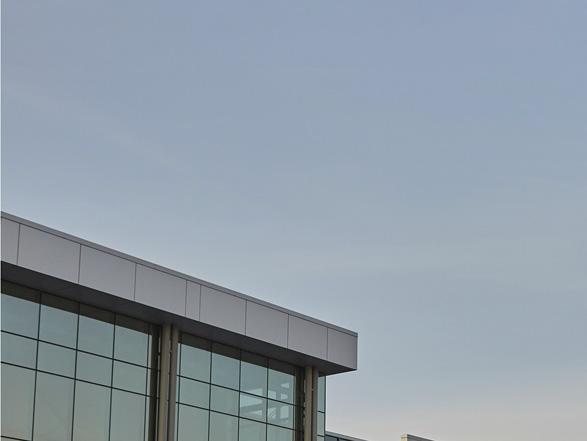

As more pipeline owners require higher strength pipe, the industry needs a reliable high-strength electrode. Pipeliner® LH-D is Lincoln Electric’s solution. For years, cellulosic rods have been (and in many cases still are) the electrode of choice for pipeline welders due to their ease of use and ability to adapt to variations in weld joints. However, some pipeline operators are moving to higher strength, reduced heat input, low hydrogen processes when welding on higher strength steels to combat the risks associated with heataffected zone softening, girth weld undermatching and hydrogen-induced cracking.
Fortunately, new advancements in low hydrogen stick electrodes are being introduced to help address these concerns. This can be seen firsthand with the continued research and development at Lincoln Electric and its

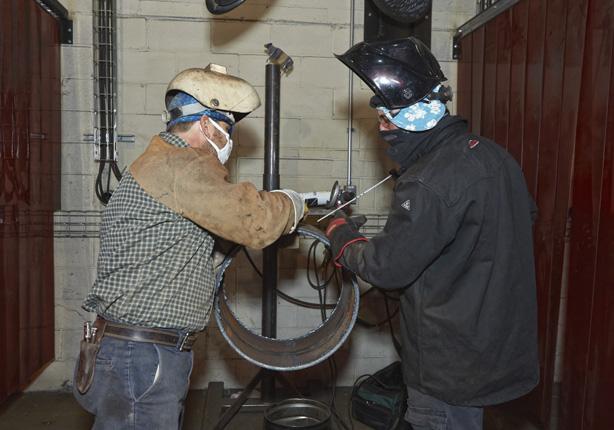
Figure 2. Enbridge attendees were able to capture instruction on how best to apply the new Pipeliner® LH-D electrode from Lincoln Electric’s expert team of instructors.
Figure 3. To reinforce what was learned, Lincoln Electric provided X-ray and weld evaluation by a certified welding inspector – something few welders get the chance to experience for themselves while in the field.
Pipeliner LH-D consumables, a core product offering designed specifically for low hydrogen cross-country pipeline applications. Enbridge adopts procedures using the new solution Training isn’t always necessary for every new product that hits the market, but utilising vertical down low hydrogen rods can require a whole new skill set and best practices on procedures and techniques. Understanding this fact, the energy company Enbridge recently worked with Lincoln Electric to develop specialised training for the new Pipeliner LH-D electrode.
Headquartered in Calgary, Canada, Enbridge moves about 25% of the crude oil produced in North America, transports nearly 20% of the natural gas consumed in the US, and operates North Ameria’s third largest natural gas utility by consumer count. Enbridge’s natural gas pipelines cover about 23 850 miles in 30 US states, five Canadian provinces and offshore in the Gulf of Mexico. Enbridge operates the world’s longest and most complex crude oil and liquids transportation system, with approximately 17 127 miles of active crude pipeline across North America. The relationship with Lincoln Electric serves a critical function this year because the company plans to continue rolling out new procedures with on-the-job training for welding contractors serving the company’s vast expanse of pipeline. “LH-D training and field implementation is considered high priority because the pipeline industry is actively transitioning away from legacy cellulosic welding practices towards higher strength, lower heat input welding methods and consumables,” said Russell Scoles, a Senior Welding Engineer Specialist at Enbridge supporting both greenfield capital expansion construction and pipeline integrity operations and maintenance. “Mitigating the learning curve associated with transitioning to a new welding technique is critical from the perspective of a pipeline operator in order to successfully move the industry forward.” What makes the reformulated system better? Unlike other low hydrogen rods, Pipeliner LH-D is specially designed for vertical down progression, producing repeatable mechanical properties with low diffusible hydrogen levels. Reformulated in 2021, it is recommended for fill and cap pass welding of up to X60, X65, X70, X80 and X90 pipe, as well as pipe repair and hot tapping applications. Benefits include higher strength welds, low hydrogen deposits to mitigate risks of hydrogen-assisted cracking, and lower heat input to help reduce potential defects and repairs. A touch-start tapered tip also helps to greatly reduce starting porosity and arc strikes on pipe.
Compared to the competition, the Pipeliner LH-D has many attributes that help users more easily adopt the electrode into their process: ) Reduction of slag fluidity offers better operability with a cleaner and more stable puddle. ) Lower diffusible hydrogen (typically 50% below the competition). In fact, diffusible hydrogen test results show that it meets the ‘H4’ characteristic for 12 hours – 25% longer than the nine hour AWS 5.5 requirement. ) Reduced starting porosity due to the tapered tip and strike assist improvement.
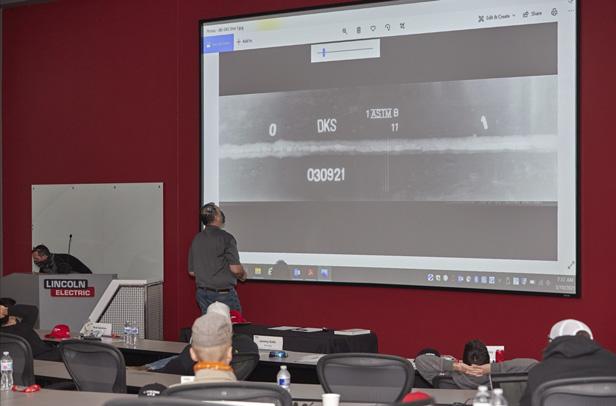
“Competition among the consumable manufacturers will continue to breed better performing electrodes, so we as end users are in a good spot. Lincoln’s latest LH-D offering has ben drastically improved and is well-received by the welders” Scoles said. “From my perspective, Lincoln Electric sets itself apart from other consumable manufacturers due to the sheer level of technical expertise and applications support available internally. If you have a challenge, then you can take it to the bank that they have someone in-house who can provide a solution.” Training programme developed for new technique To get Enbridge’s welders up to speed, Lincoln Electric worked with Enbridge to design a 2.5 day customised training course at its flagship Welding Technology & Training Centre in Cleveland, Ohio. With next-generation welding booths, equipment, classrooms and labs, the 130 000 ft2 centre is a hub for welders seeking training and solutions at every level and spectrum of welding.
The training was specially designed for Enbridge to do one thing – weld! With Lincoln Electric taking care of all the pre- and post-work of prepping pipes, the welders were able to devote their full attention to welding with the new electrode. This dedicated time allowed them to practice starts and stops, learn how to work with faster travel speeds and higher amperage, as well as practice weaving techniques.
“I would say we are a year and a half ahead of where we would have been if we were out there by ourselves winging it trying to figure it out,” said Dudley Swortz, a Senior Welder for Enbridge who attended a spring training session at Lincoln Electric. “This just speeds it up.”
The training also gave Enbridge’s welders a chance to rub elbows with other professionals in their field
while receiving instruction on how best to apply the electrode from Lincoln Electric’s expert team of instructors. To reinforce what was learned and distinguish between good and bad technique, welds were visually inspected, X-rayed and evaluated by a certified welding inspector and nondestructive testing technicial – something few welders get the chance to experience for themselves while in the field. “Normally, they just give us a thumbs up,” said Jeremy Ledbetter, another senior Enbridge welder. “Being able to work with this rod and have the supplies that we need to simply dissect it, try it out and test it against what we would put out in the field – it’s just great training.” Figure 4. Unlike other low hydrogen rods, Pipeliner LH-D is specially designed for While the training provided welders vertical down progression, producing repeatable mechanical properties with low the opportunity to practice and better diffusible hydrogen levels. understand how to apply the Pipeliner® LH-D, it also gave Lincoln Electric an opportunity to hear what works and what doesn’t. This gives Lincoln Electric’s engineering team valuable insights into how customers actually use the company’s products and provides opportunities for improvements that make welders’ jobs easier at the same time. “It’s valuable for us because we get to find out how the rods are being used in the field,” said Sam Phillips, Lincoln Electric’s Global Industry Segment Director, Pipelines. “We hear from the guys who are actually using them, and they tell us the real-world applications a little bit more in-depth. That way, we can adjust our training so that it’s more tailored and applicable to what they are really experiencing out on the line.” The conversation doesn’t stop there. As the demand in the market grows to shift to lower hydrogen consumables, Lincoln Electric and Enbridge both look to continue to share the knowledge and best practices throughout the industry. “Conversations and training will continue with external contractors to push the balance of the industry toward what’s next with pipeline welding,” Scoles said. “Making large-scale changes requires an extensive amount of effort. It’s a lot of work to break old habits and teach some of these old dogs new tricks, but it’s incredibly rewarding once you navigate through the learning curve and start to see some light at the end of the tunnel.” Note Russell Scoles would like to explicitly acknowledge all of Enbridge company welders for all of their hard work and willingness to adapt to dynamic conditions over the past 18 months. Their support and dedication to “adding another tool to the toolbox” is directly linked to the company’s success in moving Enbridge’s welding programme forward.
